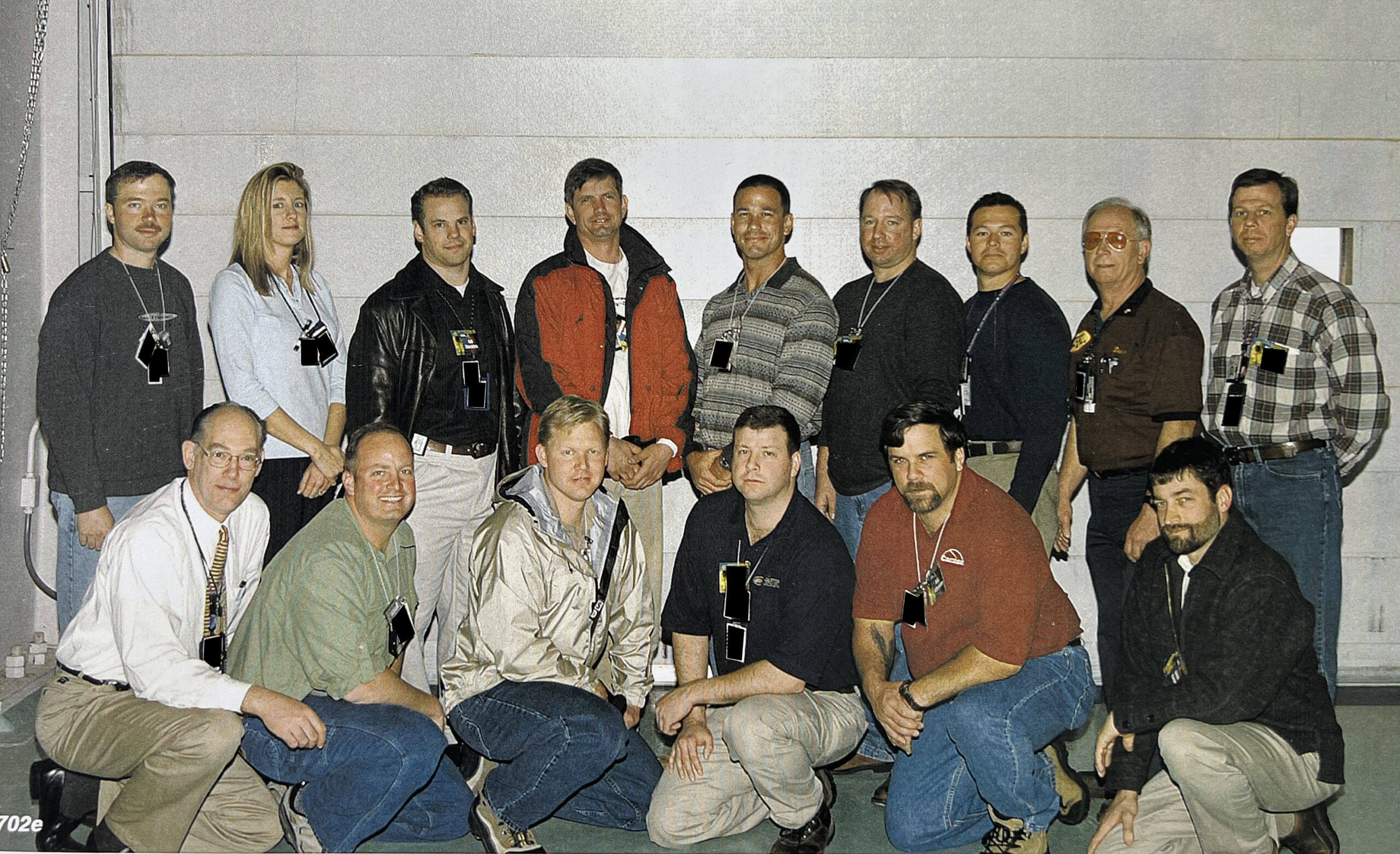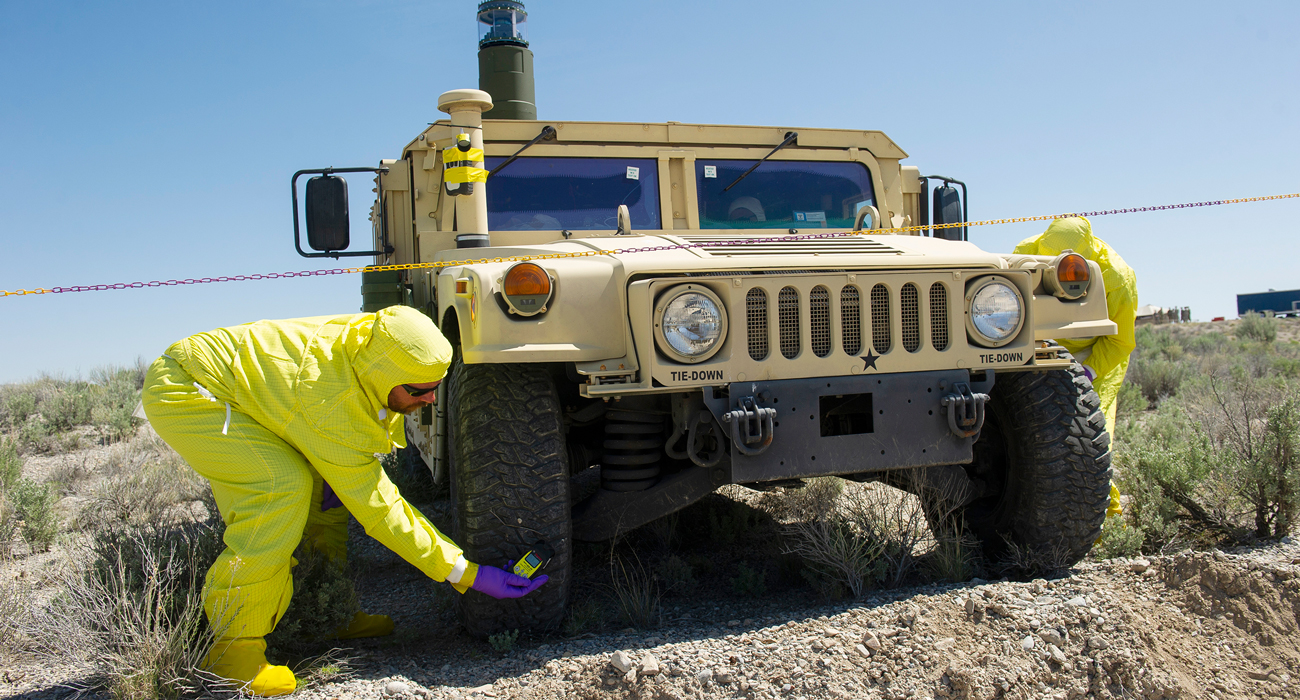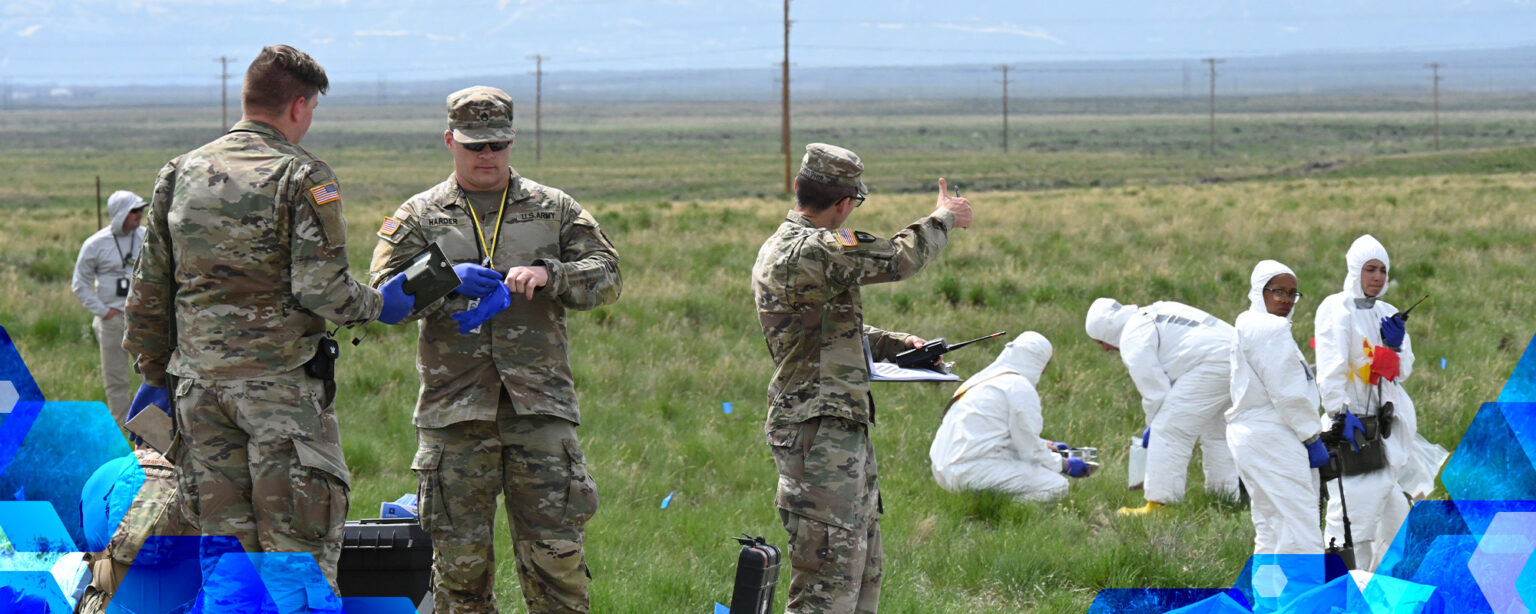Programmatic growth can sometimes involve seeking new customers, but this has not been the case for Idaho National Laboratory’s Nuclear/Radiological Search and Response Training (N/RSRT) program, which turns 20 this year. Starting with a few training events in March 2003, the program has grown organically to the point where it now conducts year-round training for radiological response entities worldwide.
After the September 11th attacks, security professionals worried that terrorists might detonate a “dirty bomb” – an explosive device enhanced with radiological source materials. INL offered distinct advantages to train responders for this type of event. The lab’s experts have extensive experience in radiation detection and hazard mitigation, plus a large inventory of radiological and nuclear materials. All of these have been used to develop the “new” training program. “We’re not using simulators,” said Program Manager Jennifer Turnage. “We’re working with real radiation sources.” INL also has open spaces and legacy facilities that are often utilized for training and exercise demonstrations.
In the beginning
INL has supported the U.S. National Technical Nuclear Forensics program since 2002. Because of the lab’s nuclear fuel examination and handling capabilities, the program’s original sponsor, the Defense Threat Reduction Agency (DTRA), selected INL to help characterize radioactive materials that could be used in a radiological dispersal device (RDD) – the official term for “dirty bomb.” At a program review, a DTRA contractor approached three INL experts – Kevin Carney, David Chamberlain, and the late Richard McKnight – to develop a training course to address how such a device might be “rendered safe.”
INL appointed Turnage as program manager. The inactive Transient Reactor Test Facility was selected as the training location due to its remoteness and inventory of high-activity radioactive sources and irradiated fuel assemblies. Jim Thalgott and Debra Kirschner provided health physics and radiological protection oversight. The late Doug Ray and Gary Englestad supported the reactor facility’s radioactive material handling and spent fuel operations.

The initial training event’s success led DTRA to establish a new contract for five additional courses for specialized teams supporting nuclear and radiological weapon incident response. Subsequent training events revealed the challenges involved with imaging high-intensity radioactive sources in different and unique scenarios. This led to research by scientist Paul Hart on which film and materials to use for imaging based on the nature of the radiation being detected, and on what procedures needed to be followed. Physicists John Giles and Christopher Oertel later contributed expertise in gamma spectrometry and radiation detection.
The program expands
Training curricula evolved to incorporate nuclear fuel cycle content and instruction on radiation detection and search techniques utilizing the Critical Infrastructure Test Range Complex and legacy facilities such as Experimental Breeder Reactor-II. Participation expanded to include response assets from the U.S. Army, Navy, FBI, and National Guard units from across the country.
“The unique capabilities INL offered, including technical expertise and the realistic training environment, made the training highly sought after,” Turnage said. Today, INL conducts more than 75 training and exercise demonstrations annually.
Program Strategist Bryon Marsh’s experience with INL’s N/RSRT program dates back to 2004, when he was in the U.S. Army and served in the 4th Weapons of Mass Destruction Civil Support Team.
“We came to INL because we were able to accomplish the training objectives we identified, and (because of) the ability to work with real radiation sources,” Marsh said. “The experts were people with extensive knowledge and experience in handling radiological hazards. You couldn’t find this training opportunity anywhere else.”
Changing technology and tools
Giles said different training events emphasize different skills. “Technology and tools have changed,” he said. INL has supported training for these specialized teams and provided invaluable opportunities for them to develop or refine conduct of operations when new tools and technologies become available.

“The next time these folks encounter a radioactive source, it could likely be a real-world incident,” Giles said. “We let them work through their procedures and watch how they execute. We’re providing them with tools and knowledge.”
Current events
INL’s reputation within the global radiological response community has not gone unnoticed. After supporting the 2018 CBRNe (Chemical, Biological, Radiological, Nuclear, and high yield Explosives) Science and Consequence Management (CSCM) World Congress, several experts from the program were invited to participate in 2023 CSCM World Congress. Since the late 1990s, the CSCM Congress has gathered top scientists from over 50 countries to engage with defense personnel, emergency responders and government officials. The focus of this interaction is to share knowledge that lessen concerns about weapons of mass destruction and to increase information on preventing or responding to possible mass casualty events involving CBRNe.
“The World Congress is getting a lot of attention on radiological preparedness,” Marsh said. “Our participation in the World Congress and the training workshop we’ll conduct will demonstrate what we’re capable of doing at the international level.”
Final thoughts
“Train as you fight” is the program philosophy. “Fight as you train” is the customer’s philosophy, hence the importance of working with actual radiation, with their designated equipment set, honing their individual skills, and learning to work together as a cohesive unit.

“You don’t drop a soldier out of a plane for the first time into a live firefight. Realistic, in-depth training is required so that they can react instinctively to any situation. We consider operating in a radiation environment … to be comparable,” Turnage said. “We’re working with the real thing, but it’s in a very controlled, deliberate manner. It’s very gratifying to observe the trainees throughout the whole process, you get a much better understanding of what they endure during deployment out in the real world.”





